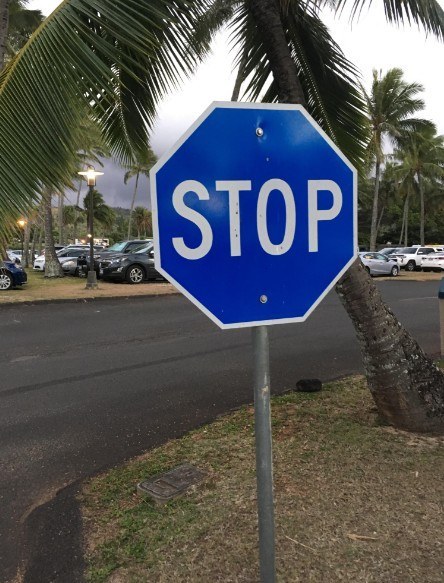For many private property managers, the color choice is intentional. A blue stop sign helps distinguish internal traffic control from public systems. In gated communities, it may reflect a desire for exclusivity or blend better with neighborhood aesthetics. On a university campus or corporate headquarters, it can tie into the institution’s brand identity, complementing architecture and landscaping with cohesive design choices.
Despite their unofficial status, blue stop signs follow many of the same visual cues as their red counterparts. They keep the familiar octagonal shape and bold “STOP” lettering, ensuring instant recognition. To counteract the fact that blue doesn’t trigger the same cautionary instinct as red, these signs often use reflective materials to boost nighttime visibility.
To understand the dominance of red in public signage, you have to go back to the early 20th century. At first, stop signs were yellow with black lettering—chosen for visibility under gas lamps and early streetlights. But as lighting improved and color psychology came into play, red emerged as the ideal color to signal danger and command attention. By the 1950s, red stop signs became the official standard, codified in the Manual on Uniform Traffic Control Devices (MUTCD), reinforced with highly reflective sheeting for maximum visibility.
Blue stop signs, by contrast, fall entirely outside this standard. They signal that you’re on private roads, where enforcement typically comes from security personnel or property managers—not local law enforcement. Violating a blue stop sign won’t land you a ticket from the DMV, but it could earn you a warning from campus security or a neighborhood fine.
Interestingly, the unusual color can actually boost safety. Drivers encountering a blue stop sign may be momentarily surprised, prompting them to slow down and pay more attention—an effect public signage rarely achieves anymore.
While blue stop signs won’t be replacing red ones anytime soon, they highlight the flexibility available in private traffic systems. Whether for branding, aesthetics, or differentiation, these signs serve a clear purpose—and prove that even in the rigid world of traffic control, there’s still room for creativity.

